How to Create a Newsletter (If You Don’t Know How to Start)

How many weekly email newsletters do YOU subscribe to?…
Uh-huh… Uh-huh (nods head solemnly).
And how many of them do you actually read?
Mmm, yes, that’s what I thought…
Me personally? I’m subscribed to over 100 different email newsletters.
I’ve been doing this for years. I like accelerating my knowledge in marketing by studying what other entrepreneurs are doing.
Yet, out of 100+ subscriptions, I only have time to read a handful each week. And I’m talking about actually reading them.
The ones I do read (and the ones you read, too)—they have something very special in common. And if you’re going to write a successful newsletter, you’ve got to understand this one special thing too.
When I tell you what it is, you’ll understand why it’s special. And it’ll probably click for you, “Yeah, that makes sense, Matt.”
Here’s a sneak peek at what’s in store for you (plus, you can click these to jump down the article quickly).
- The most important question you probably want to know before investing in this “sounds basic, but it really works (!)” tactic…Does An Email Newsletter ACTUALLY Bring In Leads and Sales???
- Creating a Newsletter Step 1: How Often Should You Send Your Newsletter?
- Creating a Newsletter Step 4: The “Special Something” That Makes Your Newsletter Irresistible to Open…
- Creating a Newsletter Step 7: The Secret to Even Higher Open Rates… Segmentation—Here’s How To Do It
- Creating a Newsletter Step 10: Do You Want To Keep Getting Sales—or Have Them Fizzle by Next Week? Then Do This…
- Bonus Step…
In a rush? Grab a copy of this article to read anytime, anywhere. Download this article so you can quickly reference it as you write your newsletter. Click here to download it now.
Does an Email Newsletter ACTUALLY Work To Bring In Leads and Sales? (Yes, Here’s Proof)
The short answer is yes.
And email marketing can do way more than just getting your messages into someone’s inbox.
Just look at what Morning Brew, the daily email newsletter covering current events, has done with one single newsletter.
- It grew revenue from $3 million in 2018 to $13 million in 2019.
- It spawned several auxiliary newsletters that each generate revenue.
- The creators sold it for $75 million in 2020
- It then made $50 million in profit in 2021
- Increased subscribers to over 4 million
No wonder people want to copy their formula.

You’d be surprised to know what a simple email newsletter can do for your business.
Newsletters are a great vehicle for delivering many marketing needs to your customers:
- Promoting your blog’s content
- Providing product or service updates
- Relaying and highlighting important information such as sales or promotions
- Communicating anything and everything else for your business
For blogs, it gives people an excuse to be driven from your newsletter to your article.
And once they land on your article, they’ll engage with your brand. Because they’re going to see your logo, they’re going to see who’s behind the brand, and they’re going to see what your core offer is.
Whether you send product updates, educational resources like articles, or anything in between, you can grow your customer base 40 times more than by using Facebook or Twitter. And since email marketing returns an incredible $36-$40 for $1 spent, your revenue will get a boost too.
Plus, you can nurture the relationship with your audience until they’re ready to become paying customers.
But that’s not all a newsletter can do for a business. It not only helps you grow revenue, it helps you create a legacy. Something people will remember and will want to read over and over.
Sending out a well-made newsletter is also about building rapport and trust with your readers.
But to build that trust, you’ve got to send your newsletters consistently. Don’t do it only when you have some big news to share, such as a new product launch or a massive limited-time discount (more on that later).
Consistency helps nurture your relationship with your audience.
Think of it like a relationship with a friend—you grow closer if you talk to them three or four times a week over for months, right? You care more about them, and they care more about you in return.
But that relationship suffers if you lose touch and only check in once every few years. And with each passing year, they will be less likely to pick up the phone and call.
That’s why it’s all about consistency.
Plus, according to Smart Insights, a consistent newsletter can do wonders for ROI because email marketing is the most effective digital marketing channel as rated by other marketers.

Email marketing revenue is on the rise, with the global market value reaching $17.9 billion by 2027, according to Global Industry Analysts. That’s a huge and steady increase in how much revenue email marketing will continue to drive.
And for every $1 you spend on email marketing, you can expect an average return of $40.

I’ve seen other data that says this stat has dropped into the 30s-range in recent years due to more marketers exploiting this channel but… $35 ROI for every $1 invested? That’s still great.
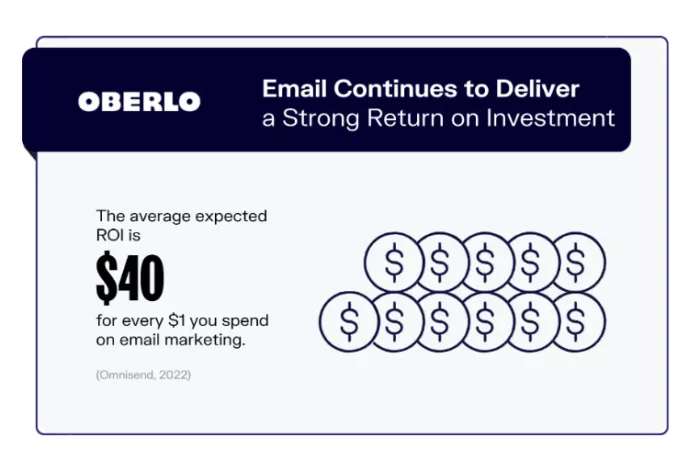
What a great time to start a newsletter, right?
Now you’re tempted to send your own newsletters. Great. Do it. Here are the exact steps to make your newsletter a resounding success:
Creating a Newsletter Step 1: Your Goal Determines How Often You Should Send Your Newsletter
Before creating your email newsletter, determine your goal.
Are you looking to grow sales? Are you looking to get more traffic? Or perhaps converting more leads?
Whatever your end goal is, you should look to stay top of mind for your customers. And most importantly, you should be looking to nurture the relationship with your audience and strengthen your brand.
Pro Tip To Remember: your relationship with your audience is like a bank account or piggy bank
The more deposits of valuable, non-spammy content you make into the account, the more the interest compounds over time.
The interest ($) comes back to your brand through word-of-mouth referrals, call bookings, purchases, and social shares, driving more traffic over time.
According to Marketing Charts, brand awareness is companies’ No.1 goal (and has been for a few years). Then customer acquisition and retention.

Also, brand consistency leads to 33% more revenue, according to Marq (formerly Lucidpress).
So if you want to boost brand awareness and keep your brand consistent, you should send your newsletters as often as possible.
So that leads to a question I’m often asked: “How many newsletters should I send every month, Matt?”
Unfortunately, I can’t tell you exactly how often you should send them. It will depend on your workload, availability, and, most importantly, your ability to write high-quality content.
However, I generally recommend people who are starting out send newsletters once per week. Once a week will get you the best results, according to GetResponse.

And the time of day you send your newsletter matters, too. Statistics say to aim for 4-6 a.m. (EST) or 5-7 p.m. to get the highest open rate.
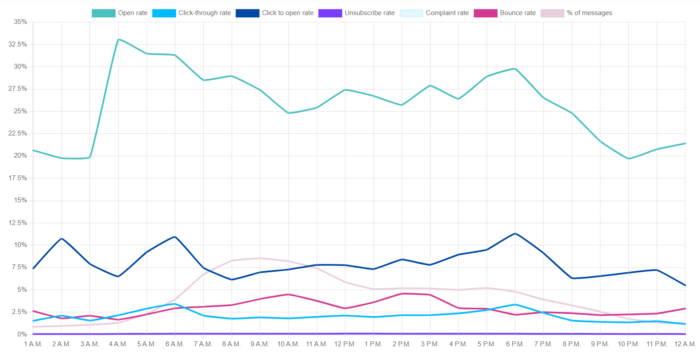
As you get better at writing newsletters, you can build a system around it. Eventually, you can increase your newsletter frequency.
Back to what I said about high-quality content…
When it comes to newsletters, if you have nothing worthwhile to say, don’t say anything at all.
People are far more likely to remember something bad about your brand than to get upset about not getting a newsletter this week.
Quality > Quantity / Frequency
(Fun Fact: At the time of writing this, our company is working to scale up to 5 articles per week. But a few times so far, we’ve pulled back because we did not want to send something that wasn’t up to par. As expected, the results keep telling us this is the right way to go.)

Your email newsletters should go hand-in-hand with a consistent blog posting schedule.
At Growbo, we promote each of our articles with a newsletter sent to our email list.
Each of the newsletters we send basically contains the introduction of each of our articles. We don’t really customize the content of the newsletters beyond that.
(This is a simple hack for you to kill two birds with one stone if you were concerned about doing extra work to get your newsletter going)
We just add the introduction, a CTA inviting the reader to read the full article, and we link to our services in a PostScript at the end of the email.

So with each article, you want to aim to do two things:
- You’re creating content that your newsletter subscribers will want to read.
- You’re filling out your site with content that will boost your organic traffic too.
Creating a Newsletter Step 2: Choose Your Email Marketing Tool Wisely (Some Are Better Than Others)
Here are some of the best tools for setting up your newsletters…
Mailchimp (Free and Basic Tool)

Mailchimp is a free and simple tool to use and has a really cool growth story (which we will write about in a future article).
However, if you go with their paid plans, prices can vary from $13 a month (after a $1 first month) all the way to $350 monthly.

Basically, this tool is very user-friendly, so anyone needing to automate their email can successfully set it up in minutes.
However, it’s not perfect. In the past, I found their customer service to be robotic. Also, their designs and templates are inflexible.
ActiveCampaign (What We Use)

ActiveCampaign also has marketing automation included in their pricing packages. The cheapest is $49/month. They also have a $149/month premium package, or you can get a customized package for a customized price.

They have tons of features, and their prices are decent for the number of features you get compared to other options.
We use ActiveCampaign to create and send our newsletters and email campaigns.
This is one of the best and most affordable digital marketing tools around, and we recommend it.
Be aware that are many other email marketing tools to choose from, and some are better than others (probably cheaper, too). However, we recommend these two because they best balance function and cost.
Creating a Newsletter Step 3: Pick Your Email Design Template (Spend Less Time Here Than You Think…)
Keep your email design simple.
I’ve talked in the past about how you don’t need too many elements in your landing pages to convey value. I’ve also given you the best tips to improve your landing page design and boost conversions, and the 35 web-design mistakes to avoid.
When you create your newsletter, keep those same design principles in mind.
Ironically, minimalism is often the most persuasive. And people associate a higher level of sophistication with a simpler design.
Just take a look at these examples of high-ticket products’ minimalist designs…
In my opinion, Steve Jobs was the master at marrying high-end products with minimalist designs when he was with Apple.

And here is one of Rolex’s pages that also does minimalist design very well.
Tip: Let your images to the talking for you.

These are two examples of simple designs that still convey a lot of value.
You can apply the same idea to newsletters…
Take a look at these newsletter examples from Google, Bylt, and Nisolo:

They’re very simple and don’t have a lot of text or elements. They let their products do most of the talking.
But minimalism doesn’t only make a high-ticket product brand look more sophisticated. It also improves leads. (Take a look at this case study from our — now free — Proven Sales Funnel Diagram Pack.)
A leading volunteer abroad organization simplified and redesigned its landing page’s design...
Before:

After:

…And this resulted in a 310% increase in leads.
Here’s a case study on Skinny Ties. By making the design of their landing page a bit more minimalist, they got a 13.6% increase in conversion rates and a 42.4% increase in revenue.
Before:

After:
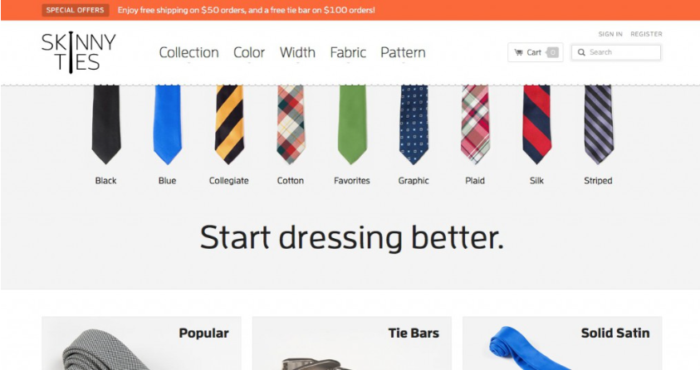
Sure, you can still have a nicely designed email template. I’m not telling you to do something you don’t like. I’m just saying not to overcomplicate the layout of your newsletter.
As a matter of fact, 93% of all communication is visual, according to Venngage.

Try to create or customize a design template that’s simple but still attractive when starting out with your newsletter.
But don’t spend too much time perfecting your template. In fact, doing so can actually make you waste way too much energy.
What matters the most here is providing readers with valuable content. Design comes second.
Growbo didn’t even have a template when we started sending our newsletters.
We used ActiveCampaign’s plain text editor… and that’s all we used.

Because when it came down to it, people liked to buy valuable stuff from people, not generic things from big faceless brands. And as long as your voice comes through in your newsletter, it doesn’t make too much of a difference what your design is like.
Bottom line: Keeping the design right is less important than your brand voice.
Great news… Growbo has gone freemium! Delegate your marketing in only a few clicks—with no contracts and no hiring headaches. It’s project management software with a team of digital marketing professionals at your fingertips. Click here to sign up for a free, hands-on demo of our new freemium option today.
Creating a Newsletter Step 4: Before Writing, Center Your Mind on What Works (This Is That “Special Something”)
Creating your newsletter is not sitting down and writing anything that comes to your mind.
Nope.
Every single sentence you must convey value to the reader. Otherwise, people get bored and will put your emails into their trash or spam folder. FYI: the average person’s attention span is now shorter than a goldfish’s.
So when you create your newsletter, stop after every sentence you write and ask yourself, “Is this sentence actually adding value to the reader?”
It’s funny because I’m actually doing that right now. I’m questioning if every sentence I write in this article will add value to you .
But anyway, you won’t believe how effective this best practice is.
It lets you determine if your writing is worth mentioning or cutting out entirely. It lets you send your subscribers only high-quality content—all by simply being critical and judging the messaging you’re creating.
Because in the end, what determines whether people will read your stuff is if it’s of high quality and value. And this is the “special something” all newsletters must have to get read.
Remember, don’t send bland content. Or filler images. Or random emails asking your subscribers to just buy from you.
The content of your newsletter must be valuable to the reader.
For instance, don’t include cookie-cutter content that no one wants to read or cares about. Be authentic.
90% of millennials say authenticity is important to them when deciding which brands they support.

But despite that stat, some brands aren’t authentic, though.
They just send automatic email newsletters without realizing that a human will actually be reading them. And this is exactly what makes them not get more email engagement.
Be especially careful to understand your audience. Because when you don’t, you could be creating content you think is authentic and meaningful for them. But really, you’re just alienating more of your audience.
A whopping 88% of people want authenticity. If you’re not providing it to them, they will find someone else who will.

But there seems to be a disparity between what companies think they are putting out and what readers actually think about their content.
According to Stackla, 51% of consumers think that less than half of brands actually create authentic content, but 92% of marketers think their content resonates as authentic with their customers. This is a problem. This means most marketers aren’t doing as good of a job creating authenticity as they think.

Only use unique content that speaks to people, and that is relevant.
That’s the only way you’ll make your subscribers actually read your emails and eventually convert them into paying customers.
Creating a Newsletter Step 5: Choose What the Heck(!) You’re Going To Write About (Make It “Repeatable”)
To send out newsletters regularly, you must build a system.
What exactly does this mean?
Great question.
It means you can’t afford to wonder what to send in your newsletters every week. You need to create something sustainable. You also need the process to be repeatable.
Marketers waste nearly 25% of their time per week on duplication of work. That’s 328 hours annually they could be putting into something else.
And the more you can systematize your newsletter, the more time you’ll save.
For instance, as mentioned earlier, one way to speed things up is by building a system where you send a newsletter to promote every single article you write for your blog.
We have a calendar where we write down all the articles we’ll publish in one month.
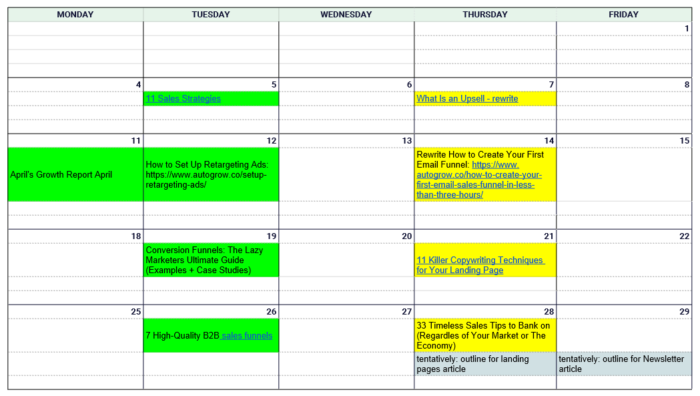
Yes, this means you must also build a system for writing your articles. But who said it was going to be a piece of cake?
It requires some time and effort, but it’s worth it.
Starting out, just write an article each week. Write about anything you think can add value to your audience.
Whether you’re a startup, entrepreneur, agency, or business owner, you know your stuff. You built your company, didn’t you?
No one knows your products or services better than you do.
So what you’ll do is grab a pen and put all that knowledge into a paper. Well, it’d probably be more efficient to type it on a computer, huh?
But you get the point.
Side note: What about AI?
New AI writing technology (such as ChatGPT and Bard) can allow you to write a whole newsletter in seconds.
In fact, 28% of marketers use generative AI to create emails.
But be careful about relying too much on AI for newsletter writing. (We are writing an article about if the hype on AI writing tools is just a fad. Stay tuned.)
AI is good for writing fast but not necessarily good for writing well. Be careful with generating generic content that doesn’t offer value. Remember, people crave authenticity and usefulness. AI doesn’t really offer that. I would say to use it sparingly, and other professionals agree.

Yes, AI will write a better newsletter if you’re a terrible writer. But you’d be better off hiring a professional writer who knows how to use AI properly—as a supplementary tool—rather than wholly relying on it to create your newsletter. (AI is better for ideation and editing, which we’ll cover in the next section.)
But back to what you should definitely do when choosing what to write about…
You want to gather all the information about a specific topic related to your products or services.
Do some research and gather some data. Interview other entrepreneurs in your business industry. Make a podcast.
Then put yourself in your readers’ shoes and ask yourself, “What would they want to read about? What problems do they need solving? What are the tools to help them solve those problems?”
Put all that information into an article and promote it via your newsletters.
That’s exactly what we do at Growbo.
We create valuable, weekly content that educates our audience about relevant topics and helps them solve certain problems.
Take, as an example, the article you’re reading right now.
It’s meant to help you (the reader) solve a problem (how to create a newsletter) while providing you with tools, examples, and stats on how to do so.
What we always do is take the introduction from the article and turn it into the newsletter.
Just take a look at the intro from this article in the screenshot below…

We added it to ActiveCampaign and turned it into the newsletter sent to promote this post.

It’s the exact same content from the intro. We just added a CTA button to read the full article, a postscript plugging in our services, and the same header image from the article.
Creating a Newsletter Step 6: Create Your First Draft and Edit It With These Free Tools
Draft your newsletter and ensure you use a clear, simple vocabulary and easy-to-digest text.
Don’t use jargon or fancy words that’ll only make the reading experience for the reader more difficult.
Write in first person and a conversational tone. Just write as if you were talking to a person. Avoid using a super formal tone, as studies from the Nielson Norman Group found that most people prefer a casual one.
For this, there are two tools we at Growbo simply love and use all the time. They’ll help you nail the perfect tone and make your writing easier to understand.
Hemingway App
The Hemingway App is a free tool is perfect for simplifying your vocabulary.
It shows you which sentences are hard or super hard to read, and which words or phrases could be replaced with a simpler alternative.

See how this tool highlights with different colors the text that should be improved?
Very simple, user-friendly, and useful tool.
Studies show that writing with a Grade 3 readability level gets the highest response and open rates.
Grammarly
Grammarly is really easy to use and free as well.
It’s basically a grammar corrector.
By simply pasting the text, it checks for typos and points out grammar errors.

See how it highlights typos and suggests the right word to use instead.
ChatGPT and Other AI Writing Tools
AI writing tools like ChatGPT are good for a great many things in terms of productivity (not so much for writing high-quality, authentic content, as mentioned earlier).
Two practical uses for ChatGPT are (1) revising or simplifying your content and (2) getting ideas on improving your content.
Here’s an example of a simple command to give ChatGPT that will turn your bland, unedited text into something readable.
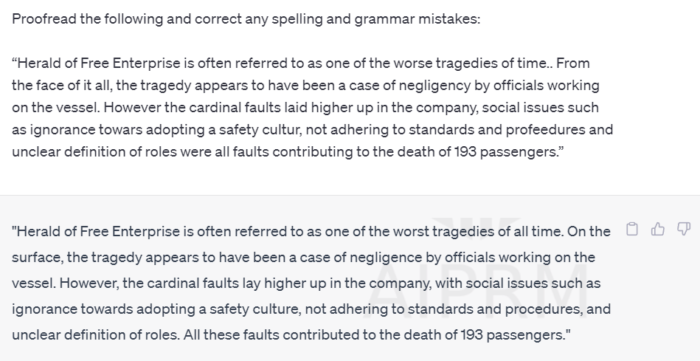
ChatGPT is a writing assistant, not a writer. It can help you strengthen content, offer ideas on new ways of saying it, write in a different tone of voice, think of jokes, and other things like that. It’s a tool to improve your content, not write it for you.
But, and I cannot stress this enough, make sure your finished newsletter content is in your brand’s voice, not ChatGPT’s voice. And always go back and read and edit your final draft yourself.
If you rely on ChatGPT to do your thinking for you, key context and empathy will definitely be missed. I don’t believe it writes better than a trained copywriting professional who knows the product and audience. Maybe one day… but not today. (There are many blogs about the drawbacks of using AI versus a copywriter, but not much empirical proof.)
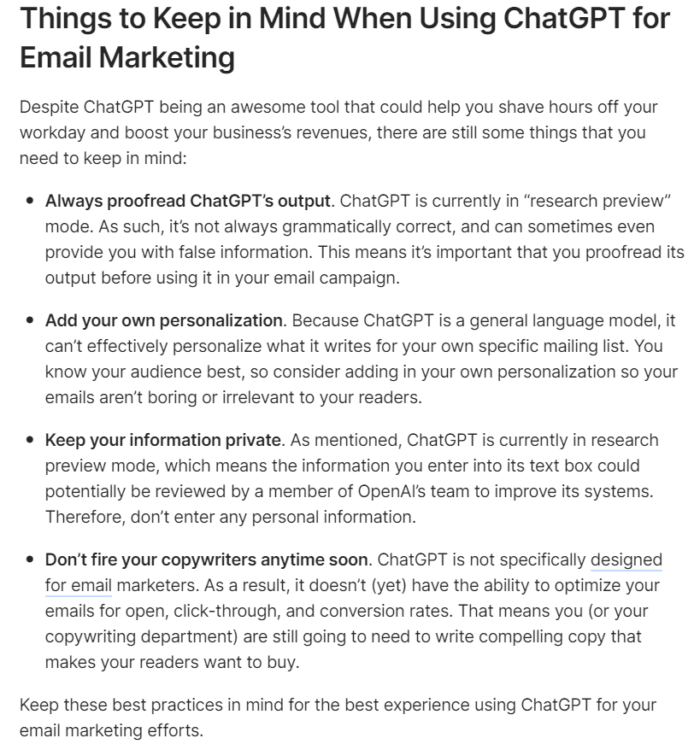
Today, now that everyone knows about ChatGPT, people will stop reading your newsletter if it sounds machine-written.
But remember, ChatGPT or not, every single piece of content you promote via newsletters must be proofread for typos. Typos = lost sales. We confirmed this in 2018 when we fixed typos on one of our info product sales pages and saw sales immediately go up.
I suggest using one or all of these three above tools. Plus, adding the human proofreading touch, like having a friend or colleague read it (or you can use the pros at Growbo…).
And don’t forget to write in crisp sentences and one to two sentences per paragraph max like this…(remember, people now only have 8-second attention spans)
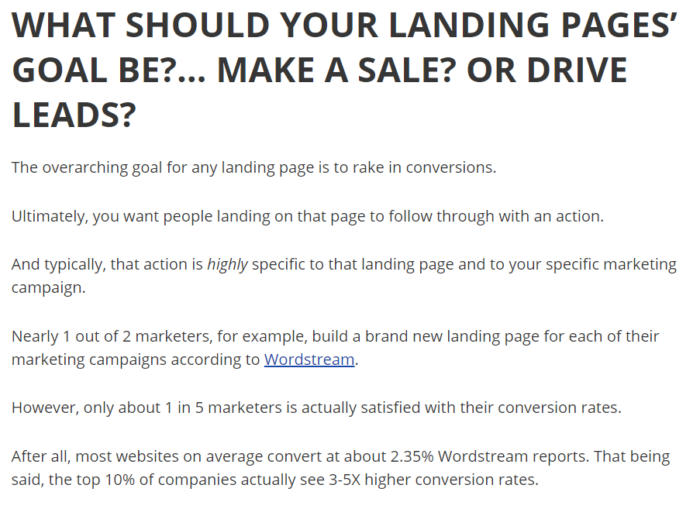
This’ll make the reading experience smoother rather than going through long paragraphs like this…
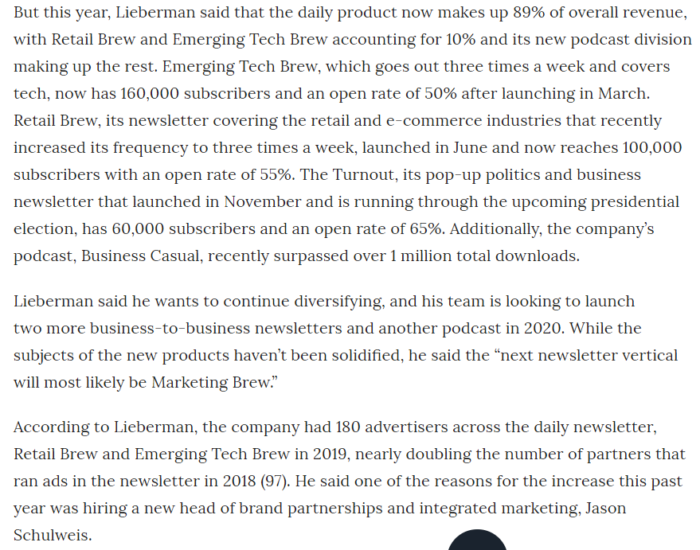
Also, don’t assume that just because you wrote the newsletter, it won’t have any grammatical errors.
Grammatical errors are associated with low perceived credibility, so proofread and edit your content before sending it out. (Another hot tip: read your newsletter out loud. If you proofread your own work, it’s easier for your brain to hear mistakes than see them.)
Creating a Newsletter Step 7: Segmentation: Figure Out What to Send To Whom (the More Segmented, the Better)
Start by sending out your newsletters to everyone on your list.
I literally launched our company with a single newsletter.
You can start your first newsletter by showing people what it is you’re doing. Show them what you stand for, where you want to take the business to, and what you’re selling.
Remember, people want to buy from people. The more relatable your business is (who you are, what you stand for, etc.), the more likely people will be to buy from you.
And later down the road, when you get more and more opt-ins to your newsletter, you can better segment your audience and send content that’s actually relevant to them and personalize it.
What I mean segmentation here is, put your email subscribers into different buckets based on their preferences as they opt-in for your newsletter. We ask 2 questions of all new subscribers today:
- Who are you? (agency, coach, ecommerce, SaaS, pro services, other)
- What’s your biggest marketing problem right now?
The better segmented your audience is, the better you’ll understand their needs and can tailor your newsletter content. And of course, this’ll let you send them exactly what they’re looking for.
For instance, when we implemented a survey funnel around 2015, we saw open rate and click rates DOUBLE — and we were only segmenting with one question then i.e. “what marketing problem do you want to solve”.
Further data from Mailchimp shows the difference between segmented and nonsegmented campaigns.

The differences are pretty obvious. The segmented campaigns performed way better than the nonsegmented ones.
Consider adding some questions in your opt-in form as we do to segment better.

And we give them the answers to choose from so they don’t have to type a random answer.

Then, depending on their answers, we send them an email automation with highly relevant content and tips tailored to their need.
This is simply a great way to segment your email list.
Also, you can offer different lead magnets to segment your readers’ interests. (Which lead magnet did they download? Which topics does this indicate they are interested in?)
As a matter of fact, segmented email campaigns can give you a massive 760% increase in revenue, according to the Direct Marketing Association.
Huge.

Whether it’s newsletters, landing pages, email marketing, or any other digital marketing need, we’re here to help. At Growbo.com, our pros are ready to assist you—all you need to do is delegate. Start Your $7-for-7-Days Trial Now.
Creating a Newsletter Step 8: AB Testing Subject Lines and Pre-Send Checks (Once It’s Sent, You Can’t Undo It)
The best way to engage your audience with your newsletters is by writing compelling subject lines.
Subject lines are super important for getting people to read your stuff.
It is one of your highest points of (conversion) leverage, similar to headlines on a sale page. People will read the headline and if relevant or if it hooks them, then they’ll read the rest.
In fact, a reader’s behavior and whether they open your email or not is largely based on subject lines.
Research by Invesp shows that 47% of people opened an email based on subject lines alone. And 69% of recipients reported an email as spam based only on the subject line.
As a result, it’s important that you create compelling subject lines that’ll make people want to open and read your emails. Tools like ActiveCampaign and Mailchimp also have built in spam detection engines so they’ll tell you before you send if the subject line is pushing it to the spam folder and whether to revise.
Consider adding emojis to your subject lines too. Adding emojis to your subject lines can actually lead to a higher open rate, but not always, and you need to do what’s in line with your brand. Test, test, test.
![]()
You can also write different variations of your subject lines for each newsletter too (we write 20 for each one).

To improve your email subject lines, try this exercise with at least 10 different options.
Use a number (stat, percentage, etc.) in the title for visual appeal and intrigue.
A/B test the subject lines to find the ones with higher open and click rates.
Most email platforms (MailChimp, Constant Contact, Get Response, ActiveCampaign, etc.) offer A/B testing, and you can start with two variations for smaller lists or experiment with three or more for larger lists. For lists below 500 contacts, focus on the open rate.
As your list grows, you can test more variations against each other.
Then, find the subject lines that work best by A/B testing them.
A/B testing your subject lines lets you determine which of your subject lines has a higher open and click rate. And with that data, you can optimize and improve your future subject lines.
Once your list grows bigger, you can start testing more variations against each other.
For instance, we at Growbo always choose four subject lines from the 20 and run A/B tests.

One way to help pick out which of your variations to test is by using the Headline Analyzer from the Advanced Marketing Institute (AMI).

It analyzes your subject lines and gives you an overview of the Emotional Marketing Value (EMV) score. Reaching customers on an emotional level is the key to more engagement. It’s based on how many intellectual, empathetic, and spiritual words you use. The higher your EMV score, the better chance your reader will click your title. AMI says most copywriters get headlines in the 30%-40% range, so aim for higher than that.
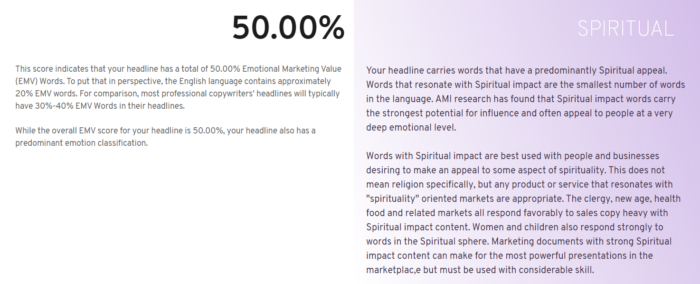
And finally, check your newsletter before it’s sent. Because once you hit “Send,” you cannot undo it.
You can send a test email to your email address to ensure everything’s in place. It’s what we do with every newsletter we send.
![]()
For this, make sure there are no typos. Ensure that the CTA button link leads to the right article.
And make sure that you’re sending the newsletter to the right contacts list.
Creating a Newsletter Step 9: Track the Success of Your Emails and Pick Out Insights You Can Use To Optimize Later
This step is really simple.
You’re going to check the stats of each newsletter you’ve sent.
Sure, there are plenty of metrics to check, like:
- Click-Through Rate
- Conversion Rate
- Bounce Rate
- List Growth Rate
- Email Sharing/Forwarding Rate
- Overall ROI
- Open Rate
- Unsubscribe Rate
But to start with, you’ll check the click-through and open rates of each email. It’s not only what we typically check for at Growbo but what most people surveyed below claim to be their key performance indicators.

For example, for this newsletter we sent in the past, ActiveCampaign gave us a report of how many people opened the email.
The screenshot below shows a 15.26% open rate.
![]()
And it also shows the percentage of people who actually clicked to read the full article.
The screenshot below shows a 1.38% click-through rate.

Open and click-through rates are the metrics we always focus most on. And then, we take that data and optimize upcoming newsletters.
For example, check which AB-tested subject line variation earned the highest open and click-through rate. This’ll help you write your next subject lines because you’ll be taking the “feedback” (open and click-through rate) into consideration.
For example, we’ve found that subject lines that start with “How To (Create a Sales Funnel, for example)” and “# Steps (To Create a Sales Funnel),” perform better than the ones that start with “What Is (a Sales Funnel)?”
Another great way to optimize the content of your newsletters is to add a section where people can comment on your blog post.
This way, you’ll engage them in a “discussion” that can potentially attract more readers to participate in it.
Each of our articles ends with an invitation for the readers to leave any comments or feedback.

And, of course, this section usually incentivizes people to ask me any questions or just to leave a comment.

Creating a Newsletter Step 10: Rinse and Repeat (Do You Want to Keep Getting Sales—or Have Them Fizzle by Next Week?)
Do you always want to make sales, or just once in a while?
I’m guessing… always.
So be consistent. Your inputs = your outputs.
We’ve learned this lesson the hard way over and over again. Stop publishing quality content? Stop sending newsletters? This stops the flow of leads and sales over time.
Publish content consistently and send your newsletters consistently to promote it.
Follow the system you’ve built with your posting schedule.
Rinse and repeat. Do it again and again. And never stop providing your audience with valuable content.
This’ll ensure they will always be constantly updated on your brand, products, or services.
Just take a look at the graph below and see how the best results are achieved when companies send between four and eight emails per month.
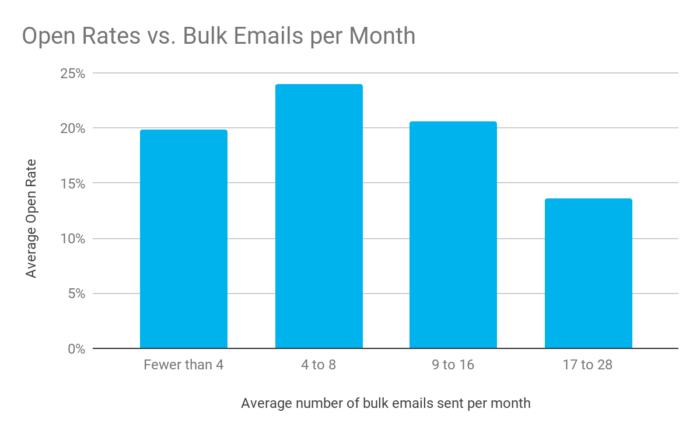
Now, you can drown yourself in comparing your stats to industry standards, your competitors, your mom’s neighbor’s kid’s newsletter, etc.
Many experts have different opinions about which benchmarks are relevant to their campaigns (and how relevant). Some people will extensively research email benchmarks that match their specific country and industry.
Others focus less on benchmarks and more on internal product sales. Whatever works for you. Since every campaign is unique, I would say get your numbers to a level that works for you, not for everyone else.
Creating a Newsletter Bonus Step: 11-Point Checklist to Continuously Growing Your Email Newsletter Audience
Here are 11 tips you can use to build your email list:
- Add a Scroll-Box
- Include Lead Magnets (like a free tools report or a free course)
- Do Guest Blogging
- Host a Webinar
- Offer Content Upgrades
- Add an Exit-Intent Pop-Up
- Require That Readers Submit Their Email Address Before Being Able To Leave Comments on Your Blog
- Have a Blog Post By-line (With an Email Opt-in Link)
- Create a Simple Form To Collect Emails
- Offer a Free Course
- Create a Self-Liquidating Offer
Conclusion
Want to create a newsletter but don’t have the time or the team? At Growbo.com, our sole purpose is to help you grow your company as fast as possible. Take the first step toward success with our expert assistance.
Whether you’re a startup, entrepreneur, agency, or freelancer, you should have a newsletter. If you want to increase awareness and understanding of your business and the products and services you sell, sending newsletters to your email list is the way to go.
For creating your newsletter, go step by step in the process…
- Step 1: Your Goal Determines How Often You Should Send Your Newsletters
- Step 2: Choose Your Email Marketing Tool Wisely (Some Are Better Than Others)
- Step 3: Pick Your Email Design Template (Spend Less Time Here Than You Think…)
- Step 4: Before Writing, Center Your Mind on What Works (This Is That “Special Something”)
- Step 5: Choose What the Heck(!) You’re Going To Write About (Make It “Repeatable”)
- Step 6: Create Your First Draft and Edit It With These Free Tools
- Step 7: Segmentation: Figure Out What To Send to Whom (the More Segmented, the Better)
- Step 8: AB Testing Subject Lines and Pre-Send Checks (Once It’s Sent, You Can’t Undo It)
- Step 9: Track the Success of Your Emails and Pick Out Insights You Can Use To Optimize Later
- Step 10: Rinse and Repeat (Do You Want To Keep Getting Sales—or Have Them Fizzle by Next Week?)
- Bonus Step: 11-Point Checklist to Continuously Growing Your Email Newsletter Audience
So tell me something… have you ever created a newsletter before? How often do you send them to your email list? Is there a step you think it’s worth including in this list?
Let me know in the comments below.
Keep Growin’, stay focused.

Image Bibliography
- https://www.smartinsights.com/email-marketing/email-communications-strategy/email-marketing-still-worth-taking-seriously-2018/
- https://www.amazon.com/Berkshire-Hathaway-Letters-Shareholders-Buffett/dp/0615975070
- https://www.statista.com/statistics/812060/email-marketing-revenue-worldwide/
- https://www.oberlo.com/blog/email-marketing-statistics
- https://www.marketingcharts.com/brand-related/brand-metrics-225684
- https://www.getresponse.com/resources/reports/email-marketing-benchmarks
- https://www.revlocal.com/resources/library/blog/why-do-unhappy-customers-leave-negative-reviews
- https://blog.hubspot.com/marketing/the-benefits-of-business-blogging-ht
- https://www.apple.com/iphone/
- https://reallygoodemails.com/
- https://www.rolex.com/en-us/watches/find-rolex/man
- https://venngage.com/blog/lead-generation/
- https://www.socialmediatoday.com/news/survey-finds-consumers-crave-authenticity-and-user-generated-content-deli/511360/#:~:text=An%20overwhelming%2090%25%20of%20Millennials,over%20’perfect%20and%20packaged’.
- https://stackla.com/resources/reports/bridging-the-gap-consumer-marketing-perspectives-on-content-in-the-digital-age/
- https://www.oberlo.com/blog/branding-statistics
- https://designmodo.com/chatgpt-email-marketing-prompts/
- https://mailchimp.com/resources/effects-of-list-segmentation-on-email-marketing-stats/
- https://www.campaignmonitor.com/resources/guides/email-marketing-new-rules/
- https://www.litmus.com/blog/the-email-metrics-marketers-measure-and-the-ones-they-should
- https://www.smartrmail.com/blog/email-marketing-frequency-best-practices-2019/













